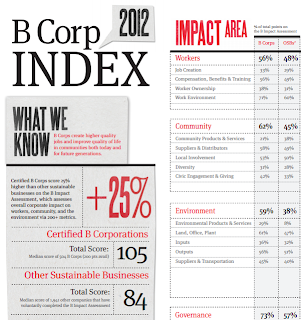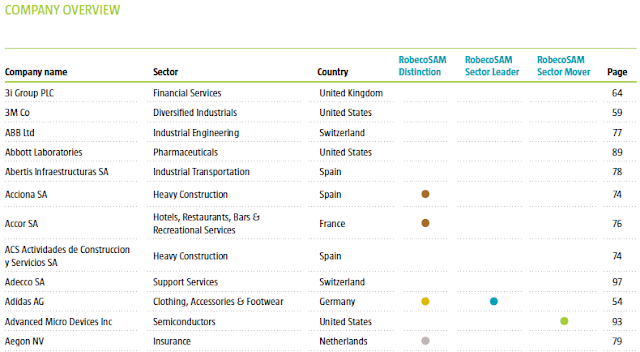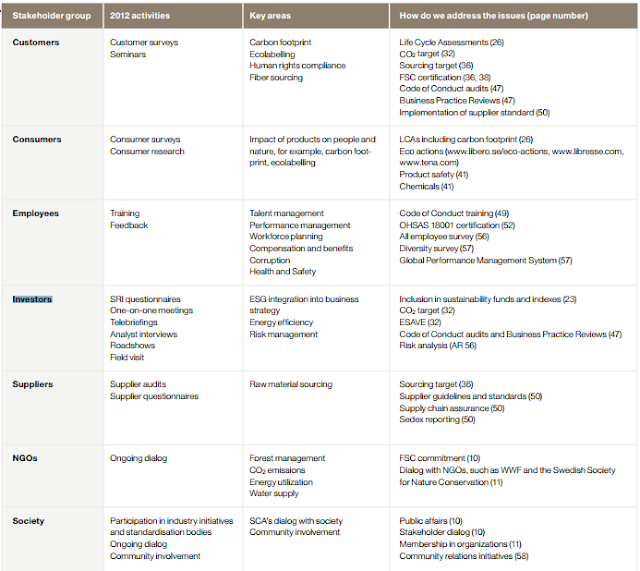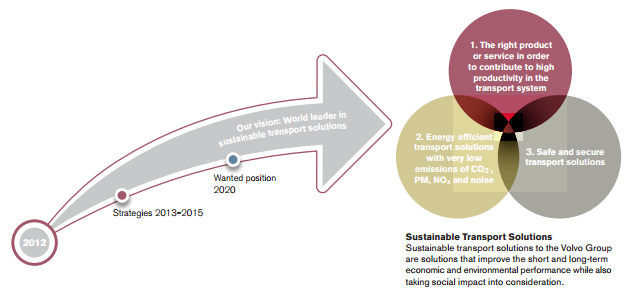All current "for profit companies" are about to become to "for benefit companies", and all stakeholders expect their benefits to show up in a the new 'Integrated report'. That is a global phase shift.
Companies can apply to become a certified 'for Benefit Corporation' (B-Corps) if they manage to reach certain standards. The requirement is to hold certain values/principles that benefits certain stakeholders. This in turn requires them to display a "Integrated report" (for all stakeholders) and not just a Financial report for the shareholders.
The last couple of years more and more companies have produced Sustainability reports + Financial reports. These two are about to become one Integrated Report.
The integrated report becomes a greatly enhanced transparency report (for all stakeholder). Just look at how the 'Sustainability reports' competitions have pushed companies to unseen levels of transparency; showing good practices never been revealed before. And there is a fundamental difference in value between 'transparent co-operation' and 'hidden competition'.
Why does it matter? Well, it does if employees start to look for companies that share their convictions; I want to be part of building a better world might become "Together for a better future" (Hyundai vision statement in their sustainability report). Vales that captures the complete framework of 'satisfaction/dissatisfaction, for all life forms, promotes diversity, access to/free from, etc'.
It might seams like a series of unrelated events; the environmental movement, the internet with access to free knowledge and data transparency, the financial crisis/frauds, unjustified distribution of wealth, Arabic spring, China, WikiLeaks, Obama, free teachings on ethics Professor Sandell's, TED, etc. '
I think most can be traced back to similar values (of which non are new) but they happen to converge to enable a phase transition.
-----
Sustainability reports:
The core focus for the current 'sustainability reports' is on the environment. Which touches upon society, and then balance it with all Traders/Stakeholders; =Humans (Suppliers, Financiers, Employees, Customers, Society) + Nature (all other forms of life).
Picture: Example of stakeholders, key areas, current state, activities (SCA page 9)
The reports basically defines "Resources needed to sustain a happy life* for One life form", and the value we place on a fair trade between the living resources; animals and other humans.
Note: Diversity is the key driver of change, similarity is the successful fruit of diversity. So there is a value in both similarity and diversity.
* Presence of Satisfaction and Absence of Dissatisfaction
The reports measures the input, output, efficiency ratio (lean or absence of negative effects) by resource (time included), trader/stakeholder, between different places in the process.
The reports define the Current state, Desired future state. The vision is 'the mountain top' we envision to go to. The mission is the way to get there. The strategy defines the chosen path (strategy). Chosen path since it's like climbing, it the pends on where we are, where we envision to go and what people/resources we have at hand right now.Picture: Example of current/future state Volvo page 11 (site).
In essence, the trader/stakeholder surveys will define; What do you want, what are you willing to pay (trade for it). Quality as measured from a stakeholder is the difference between current and future state.
The 'sustainability reports' is a form of 'balanced scorecard' that aims for a successful mix/balance between all trader/stakeholder perspectives. The different traders speaks in terms of their perspectives (and visions).
The biggest efficiency is when the traders cooperate, and the biggest inefficiency is when they don't.
In essence, efficient/inefficient is all about peoples ability to cooperate. The presence/absence of these management (bio) markers/success factors; increase chances for a successful business.
Now these changes normally don't happen all at once. They occur in leaps - from each new and successful change.
Picture: Greater result (values) only comes after periods of successful change.
In essence, the above changes can happen faster (catalyzed=time efficiency increase), by following certain values/ethics/rights (like Human rights, Natures rights, etc) and certain good practices/standards, that benefits most stakeholders.
Since it a complex chain of if-then's, it usually takes a team effort (group thinking) to feel what is right rather one (leader) that knows what is right. The team knows when it works, but working teams (and individuals) usually needs a coach/guide/teacher.
Other:
Lundquist CSR (CorporateSocialResponsibility) online awards 2012, awards good on-line publications.










